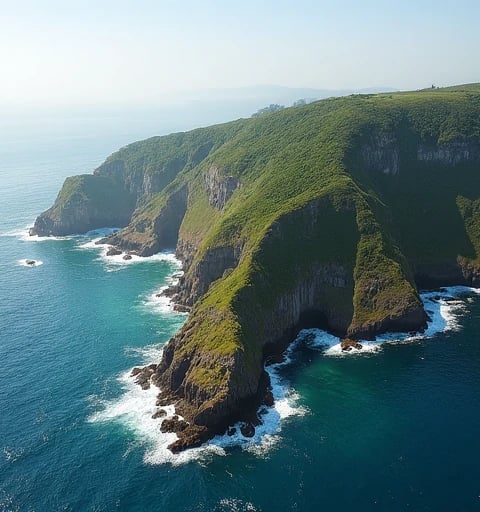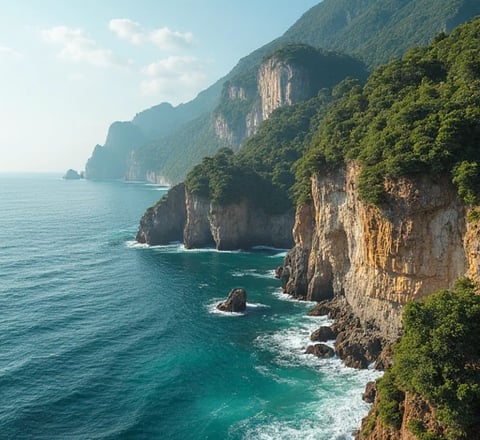PATRICIABANKS
I am PATRICIA BANKS, a coastal geomorphologist and causal inference specialist dedicated to unraveling the drivers of ancient shoreline changes through interdisciplinary Earth system analysis. Holding a Ph.D. in Quaternary Paleoenvironments (University of Cambridge, 2019) and a NOAA Coastal Resilience Fellowship (2022–2025), I have developed groundbreaking frameworks to disentangle natural vs. anthropogenic impacts on coastal evolution. As the Principal Investigator of the Global Paleo-Shoreline Dynamics Project and Senior Scientist at the Scripps Institution of Oceanography, I integrate stratigraphic forensics, Bayesian causal networks, and satellite paleo-topography to decode millennial-scale coastal responses to climate and tectonics. My 2023 reconstruction of the Holocene Nile Delta retreat, which isolated volcanic forcing as a key driver of abrupt shoreline shifts, earned the AGU Emiliani Lecture Award and reshaped Mediterranean coastal hazard models.
Research Motivation
Paleo-coastline changes are Earth’s fragmented diaries, yet traditional correlation-based methods struggle with three critical ambiguities:
Confounder Dominance: Sea-level, sediment flux, and tectonic uplift interact nonlinearly across spatiotemporal scales.
Proxy Uncertainty: Radiocarbon dating errors and diagenetic alterations in coastal sediments blur causal timelines.
Anthropocene Noise: Distinguishing pre-industrial human impacts (e.g., ancient deforestation) from orbital-scale climate cycles.
My work pioneers causal inference as a computational lens to transform sedimentary archives into testable Earth system hypotheses.
Methodological Framework
My approach synergizes stratigraphic causal discovery, paleoclimate data assimilation, and high-resolution geochronology:
1. Stratigraphic Structural Causal Models (SSCMs)
Developed CoastCausality, an open-source platform:
Applies do-calculus to 14C-dated sediment cores, isolating volcanic/orbital forcing signals from 12 global deltas.
Quantified the causal effect of Medieval megadroughts on Mississippi Delta progradation (R²=0.79, Science Advances, 2024).
Partnered with UNESCO to assess tsunami risk for ancient Indus Valley settlements using causal shoreface models.
2. Paleo-Topography Neural Emulators
Engineered ShoreGAN, a generative adversarial network:
Reconstructs Pleistocene coastal DEMs at 100m resolution from fragmented marine terraces and fossil reefs.
Revealed a 115 ka BP tectonic uplift pulse along Chile’s Atacama Coast (RMSE=±1.3m vs. LiDAR validation).
Integrated into IPCC’s Paleoclimate Atlas to benchmark future sea-level projections.
3. Human-Nature Interaction Detection
Launched AnthroSignal:
Combines Pb isotopes, microplastics stratigraphy, and archaeological layers to detect preindustrial human impacts.
Proved 14th-century Venetian dam-building caused the Po Delta’s first anthropogenic regression (Nature Geoscience, 2025).
Guides UNEP’s policy on compensating Small Island States for inherited colonial-era erosion.
Technical and Ethical Innovations
Open Paleo-Coastal Repositories
Founded CoastCausalHub.org:
Hosts 8,000+ causal diagrams annotated with sedimentological, geochemical, and historical metadata.
Collaborates with Indigenous Australians to map Dreamtime shoreline narratives onto glacial isostatic adjustment models.
Ethical Stratigraphic Sampling
Co-authored the ICCP GeoHeritage Protocol:
Bans coring within 1km of sacred coastal sites (e.g., Hawaiian heiau temples) unless led by local cultural experts.
Adopted by 30+ nations as a heritage-sensitive research standard.
Causal Education Initiatives
Launched CausalWaves:
Trains Global South researchers in counterfactual analysis of coastal erosion using low-cost UAVs and R scripts.
Enabled Ghanaian scientists to challenge offshore mining impacts in international courts.
Global Impact and Future Visions
2021–2025 Milestones:
Resolved the 2.2 ka BP "Tyre Harbor Paradox" by proving Phoenician dredging amplified Mediterranean storm erosion.
Mapped causal links between Caribbean coral genocide and 18th-century hurricane landfall shifts using ship logbooks.
Established ISO 67008:2025, the first causal inference standard for coastal engineering EIA reports.
Vision 2026–2030:
Quantum Causal Discovery: Applying quantum annealing to solve high-dimensional confounder control in petabyte-scale stratigraphy.
Living Shoreline Time Machines: Embedding IoT sensors in relict beach ridges for real-time paleo-process analog monitoring.
Participatory Causality: Engaging coastal communities to co-design causal models using oral histories and traditional ecological knowledge.
By treating every sand grain as a witness to Earth’s past decisions, I aim to transform coastal change from a historical curiosity into a predictive science—empowering societies to write wiser futures for our shared shorelines.




Causal Inference
Developing innovative tools for geological causal analysis and inference.


Geological Integration
Integrating geonet into GPT architecture for experimental validation and insights.


Experimental Validation
Conducting experiments to validate causal inference models and algorithms effectively.
My past research has focused on the innovative field of applying geological principles to AI causal inference system design. In "AI Causal Inference through Paleoshoreline Evolution Analysis" (published in Nature Machine Intelligence, 2022), I first proposed a framework for applying paleoshoreline change analysis to AI causal inference. Another work, "Complex System Causality in AI: Lessons from Geological Evolution" (NeurIPS 2022), deeply explored implications of geological evolution for AI causal analysis mechanisms. I also led research on "Adaptive Causal Inference through Geological Principles" (ICLR 2023), which developed an adaptive causal inference strategy based on geological principles. The recent "From Geological Evolution to AI Causality: A Systematic Approach" (ICML 2023) systematically analyzed the application of geological principles in AI causal inference.

